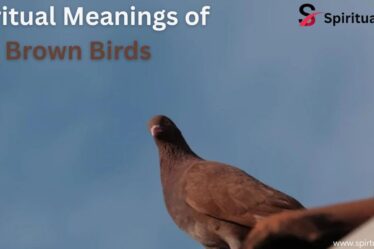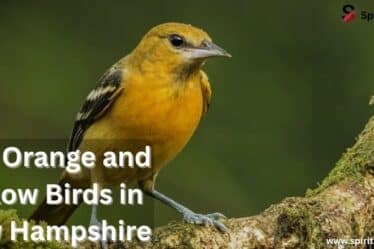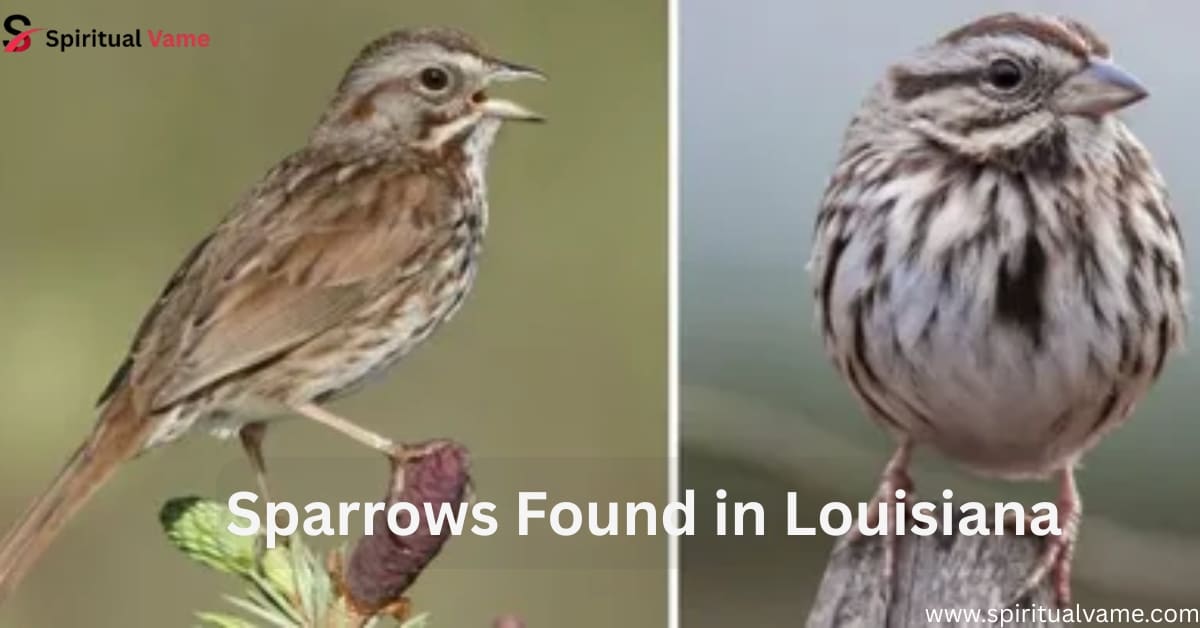
Louisiana is home to many birds, but few are as common and fascinating as sparrows. From quiet fields to busy cities, sparrows found in Louisiana live in all kinds of places. These small birds may look simple, but they are full of surprises.
You can see sparrows found in Louisiana during all seasons. Some live here year-round, while others visit only in winter or during migration. Each type has its own colors, songs, and habits. Learning about them makes birdwatching fun and easy. This guide will help you spot and understand the many sparrows found in Louisiana in your backyard or local park.
List of 22 Sparrows Information with Photo
Louisiana is home to many sparrows, both native and migratory. The House Sparrow (Passer domesticus) is one of the most recognizable species. It’s chunky, with gray coloring on the head and underparts, and males show a black bib and white cheeks. Originally from Europe and Asia, this species has adapted well to urban and rural areas in Louisiana. You’ll see them nesting under building eaves and hopping near feeders. They feed on grains, seeds, and food scraps. Known for their opportunistic behavior, they can be aggressive and often compete with native birds, even trying to evict them from nests. They can also transmit diseases to livestock and humans, making them a concern in some areas.
Other notable sparrows include the Chipping Sparrow (Spizella passerina), known for its rusty cap and black eye line, often found in parks and gardens, and the White-throated Sparrow (Zonotrichia albicollis), which has a bold white throat patch and yellow spots near the eyes. The Song Sparrow (Melospiza melodia) is a common bird with melodious notes and streaked brown plumage. The Swamp Sparrow (Melospiza georgiana) prefers wetlands, and you can recognize it by its rusty cap and gray face. These birds play an important role in the ecosystem, contributing to biodiversity and helping to control insect populations.
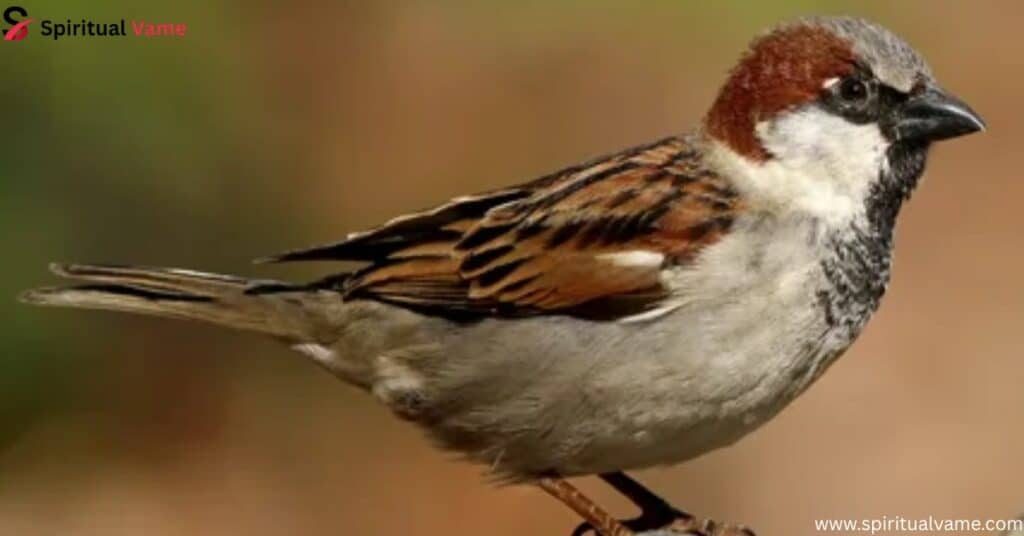
23 Species of Sparrows in Louisiana (ID and Song Guide)
If you’re wondering how to tell these little birds apart, it’s all in the details. The American Tree Sparrow has a chestnut crown and a dark spot on its chest. It sings a sweet, musical trill that’s easy to recognize with a little practice. The Lincoln’s Sparrow, more secretive, sings a high-pitched jumble of notes, often heard more than seen. Grasshopper Sparrows buzz like insects, which surprises many first-time listeners. The White-crowned Sparrow wears a striking black-and-white striped crown, while the Fox Sparrow is plump with rich reddish-brown plumage.
To identify sparrows correctly, it helps to pay attention to the color of their caps, markings on the throat, face, or cheeks, and whether they have streaked or plain bodies. But sound matters just as much. Sparrows have different calls, and many experienced birders identify them by ear before they even catch sight of them. This ID and song guide will help you connect both sound and sight with the right species.
When to Spot Sparrows in Louisiana
Not all sparrows are in Louisiana all year. Some visit only during certain seasons, especially spring and fall. That’s when migratory sparrows move between breeding and wintering grounds. You might see a sudden increase in birds like the Clay-colored Sparrow or Nelson’s Sparrow around that time. They don’t stick around for long, but migration season is the perfect moment to spot unusual sparrows not seen during other parts of the year.
Others, like the House Sparrow and Chipping Sparrow, are common in both summer and winter. They’ve made themselves at home in artificial environments like neighborhoods and city parks. These birds may be small, but they’re incredibly adaptable. Their ability to live in both wild and urban settings makes them reliable companions in any season.
Identifying Sparrow’s Songs
Sparrow songs are like fingerprints—each species has its own unique sound. The Song Sparrow, true to its name, delivers a rich and variable melody. White-throated Sparrows sing a clear whistle often described as “Oh sweet Canada, Canada.” If you hear a dry, insect-like buzz, it might be a Grasshopper Sparrow. Recognizing these songs adds a new dimension to birdwatching. You don’t always need binoculars—sometimes, just listening is enough.
These birds use songs to find mates, claim territory, and stay in touch with their flocks. You might hear more singing in the early morning, especially during spring. To learn these sounds, apps like Merlin Bird ID can be helpful. But the best way is to listen often and make notes in your backyard or on nature walks.
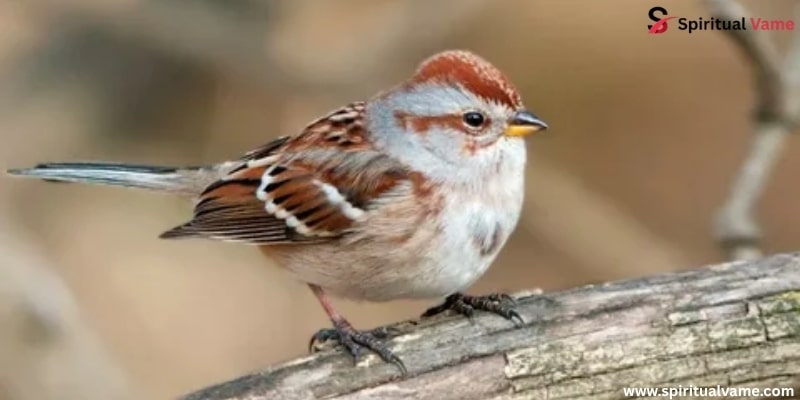
Sparrows in Louisiana All Year
Louisiana’s mild climate means some sparrows don’t need to migrate at all. The House Sparrow, as mentioned earlier, is one of the most widespread. Though it’s not native, it’s now deeply rooted in the state. The Chipping Sparrow can be found in both open woodlands and suburban lawns. Eastern Towhees, while larger than most sparrows, scratch at the ground in search of seeds and insects and give off a loud “chewink” call.
Seaside Sparrows live in coastal marshes, and if you’re in southern Louisiana, you might hear them chirping among the reeds. Bachman’s Sparrow, a rarer find, lives in pine forests and is known for its sweet song. The Grasshopper Sparrow, with its dry trill, prefers grassy fields and meadows. These species offer consistent joy to those who take the time to notice them.
Sparrows in Louisiana in Winter
When winter comes, sparrows from up north travel south to warmer places like Louisiana. This is when you’ll spot birds such as the White-throated Sparrow, Savannah Sparrow, and Swamp Sparrow. These birds are more visible in winter fields, roadsides, and even your backyard if you leave out seed. The Dark-eyed Junco, another cold-season visitor, has a dark head and pale belly, often seen in flocks scratching around on the ground.
Other winter visitors include the White-crowned Sparrow, Field Sparrow, and Lincoln’s Sparrow. If you’re lucky, you might even catch a glimpse of the shy and chunky Fox Sparrow. The Vesper Sparrow prefers open fields, while the LeConte’s and Nelson’s Sparrows favor marshy edges. Keep an eye out for the Harris’s and Henslow’s Sparrows, which are harder to find but not impossible with patience. The Spotted Towhee, a bold and colorful bird, rounds out the winter cast with flair.
Sparrows in Louisiana during Migration
Migration is the most exciting time for birders in Louisiana. It brings in sparrows that you won’t see at any other time of year. The Clay-colored Sparrow, for example, only passes through briefly. It’s pale and plain-looking but easy to recognize once you know its soft buzzy call. Migration periods usually fall in early spring and mid-fall, when the weather changes and birds follow ancient routes between breeding and wintering zones.
You’ll want to visit grassy fields, edge habitats, and wetlands during these times. Birds often travel in mixed flocks, so you may spot several species in one place. Early mornings are best, especially after a cool front moves in. This is when sparrows rest and feed heavily before continuing their journey.
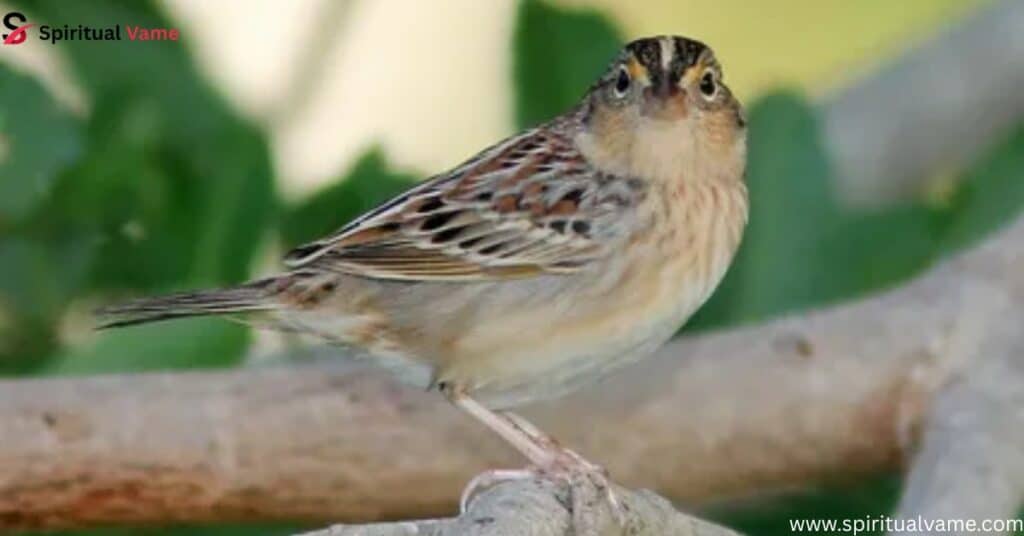
How to Attract Sparrows to Your Backyard
Bringing sparrows to your own yard is easier than you think. These birds love areas with bushes, trees, and native grasses. Avoid over-manicured lawns—sparrows need cover to feel safe. Use feeders filled with millet, cracked corn, or sunflower seeds. Even House Sparrows, with their gray heads and black bibs, will show up in flocks if food is available. You might also attract native species like the Field Sparrow or White-throated Sparrow in winter.
Birdbaths and shallow water dishes are important too. Clean them regularly, especially during hot months. Avoid using pesticides in your yard, since sparrows feed on insects, especially when feeding their young. The more natural your space feels, the more likely sparrows will come to stay.
Conclusion
Louisiana is a true haven for sparrow lovers, offering a wide range of species throughout the year. From the ever-present House Sparrow to the melodious Song Sparrow, and even seasonal visitors like the Fox and Clay-colored Sparrows, each bird adds its own beauty to the landscape. Whether you’re strolling through wetlands, exploring a quiet field, or just watching your backyard feeder, sparrows are always nearby, bringing life, song, and diversity to every corner of the state. All it takes is a bit of curiosity and a sharp eye to enjoy them.

Spiritual Vame is a spiritual blog dedicated to exploring the deeper meanings behind signs, symbols, dreams, birds, and other elements of the spiritual world. Our aim is to guide you on your inner journey by helping you understand the hidden messages that life and nature often present. At Spiritual Vame, we believe that spirituality is a path to deeper awareness, peace, and personal growth.


